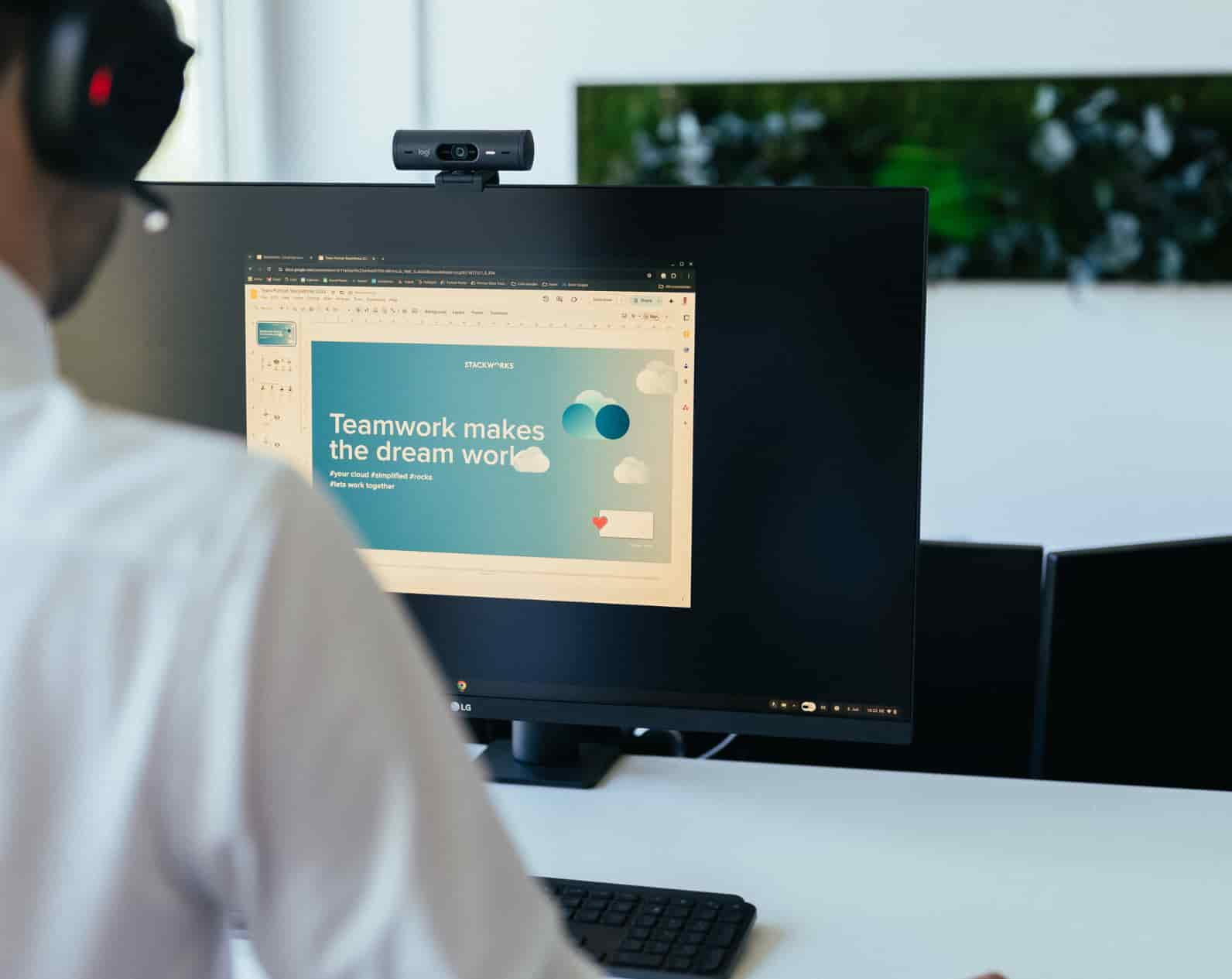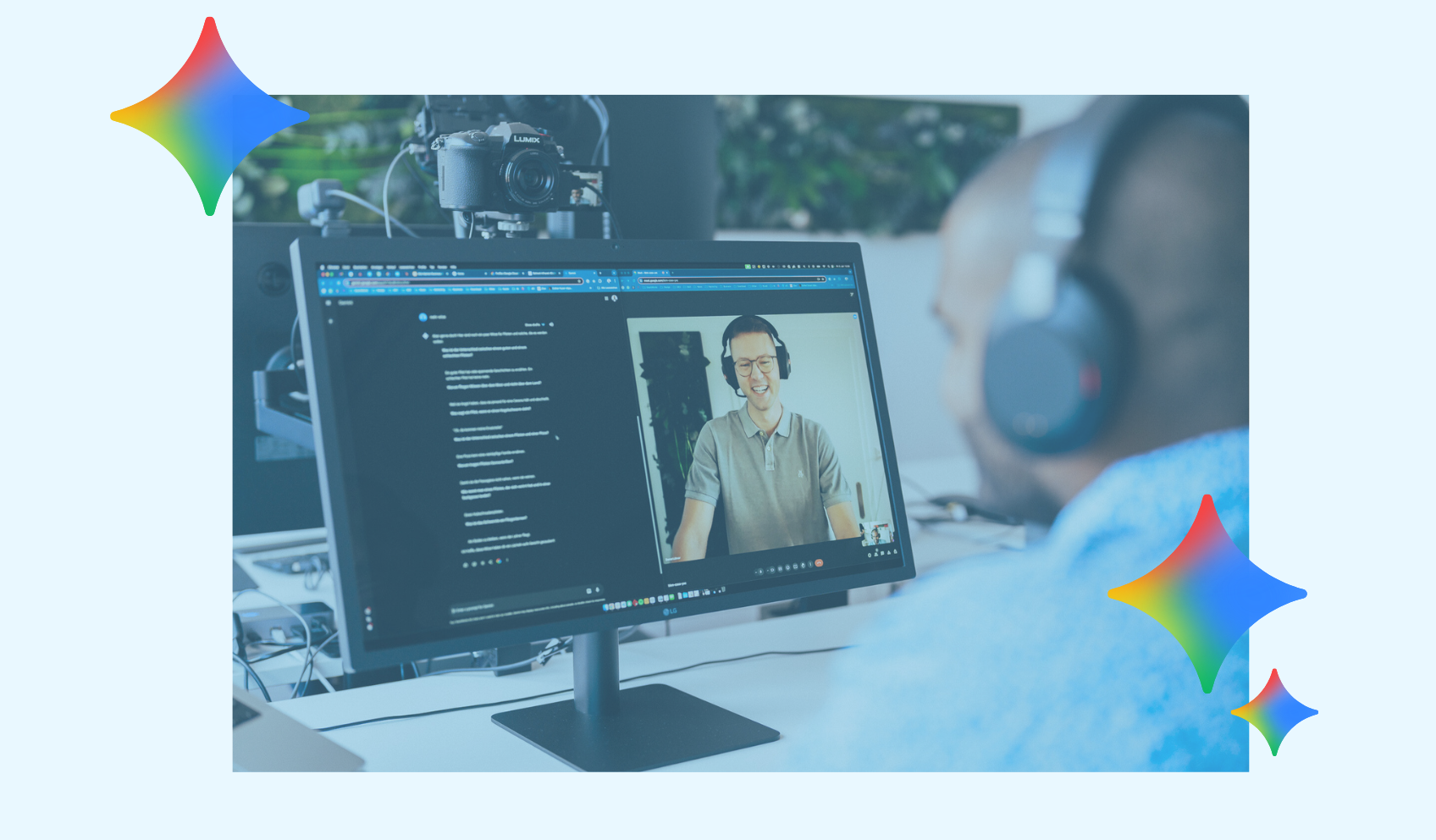Classroom in the classroom and distance learning
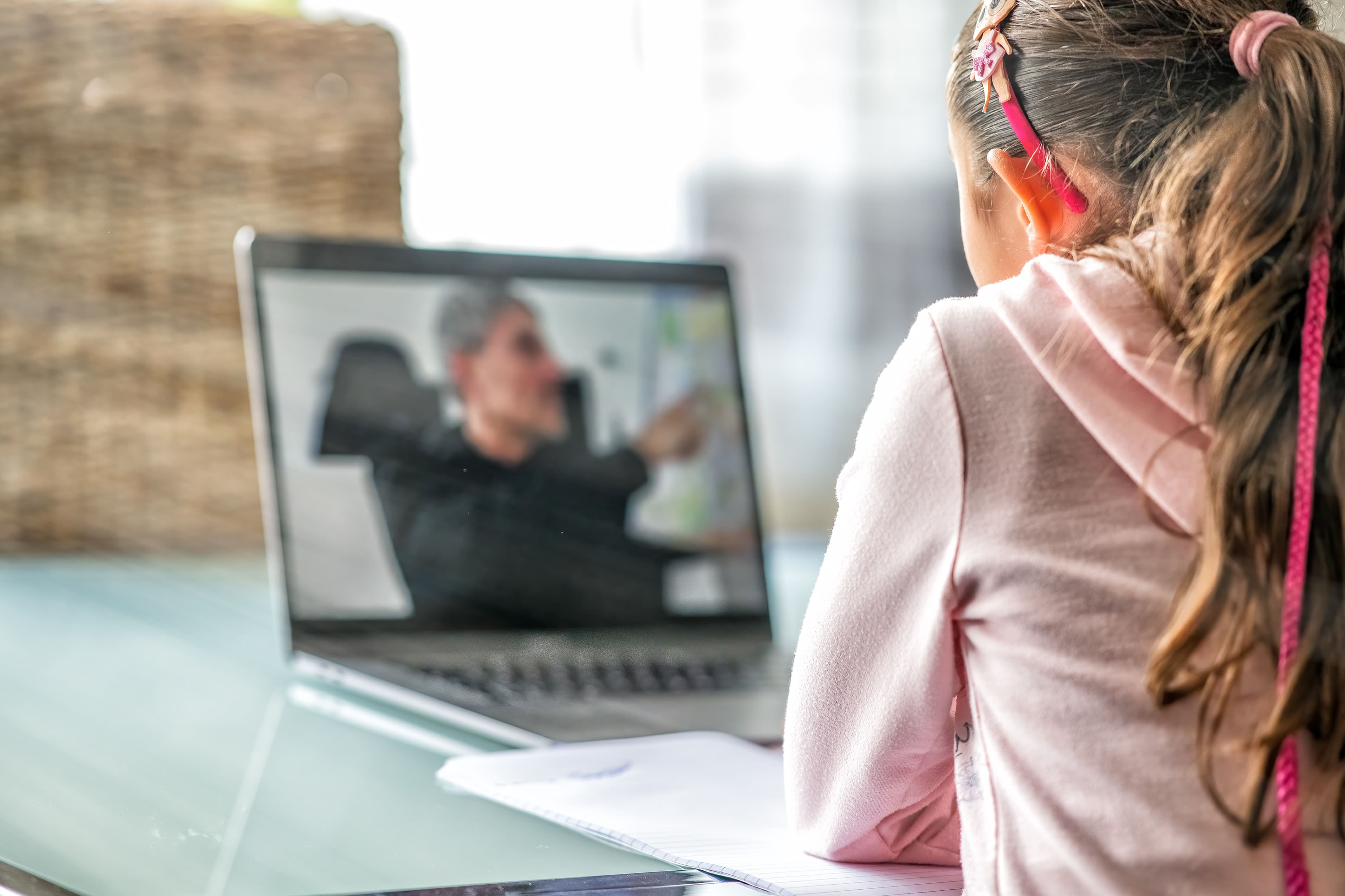
For institutions and individuals actively using Google Classroom, there are many tips and tricks to help complete workflows and administrative tasks faster, leaving more time for teaching. Here is a field report:
The structure of the annual courses works quickly and well. So that I don't get confused over the years, I write the school year in the info line, under the course name. This is then transferred to Google Drive. This way I not only see the course, but also know which school year it was. Cross-year courses, such as project lessons, which are taught throughout the year and in several classes at the same time, we create collaboratively: I invite my colleagues as additional teachers. We structure the topics according to the project phases and label them as follows:
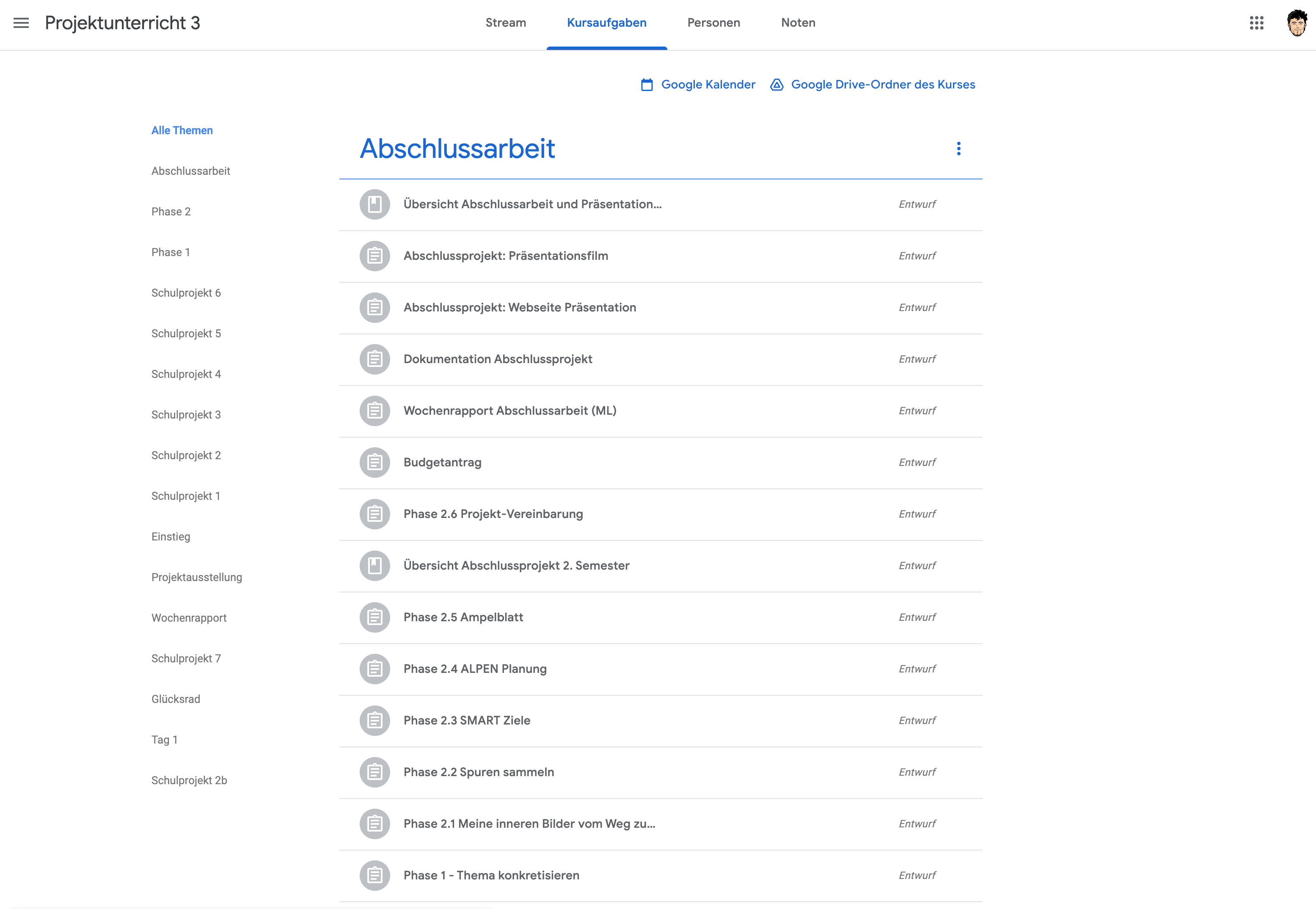
In my other year courses, such as maths, I name the topics according to the lesson material (e.g. 3a Powers and Rules) or in English according to Units 1, 2, 3, etc. This structure helps me, my colleagues and my students to keep order.
I post the material as material and not as an assignment: This does not generate an email to the students. I post tasks as assignments when something actually has to be edited and handed in digitally. Otherwise the teacher overview "Edit" becomes unnecessarily large. I also give each assignment a unique number #001, #002 so that we can quickly identify which assignment it is. Emojis for exams, certificates or emojis indicating group or individual work provide additional clarity.
Useful Google Classroom features
What I like very much is that I can prepare assignments in advance, but they are not yet visible as drafts to the students, but only when I decide to make them available to them. I regularly use the 'schedule' function so that I can plan the task to the day and minute and not have to think about publishing the task the morning after next.
At the beginning, when I start with the students in Google Classroom, I leave the stream switched off. Only later, when the overview of the many tasks is no longer given, do I switch on the timeline and thus increase the overview. At the beginning, it is important to discuss what should be commented on and what kind of chatiquette we want to follow. Agree on what should be discussed and what is not wanted! Troublemakers can be muted and stop commenting. Furthermore, as the course leader, I can delete or change any comment.
At the end of the school year, I return all work and archive the Classroom course if I have not already done so. I also create a one-time archive folder on Drive and move all Classroom Drive folders that are no longer needed at that time to an "archive" folder. This way I only have the current year's courses available in my Classroom folder on Drive. I can use bookmarks to access the individual Classroom courses or Drive folders directly: bookmark them with icons for faster access!
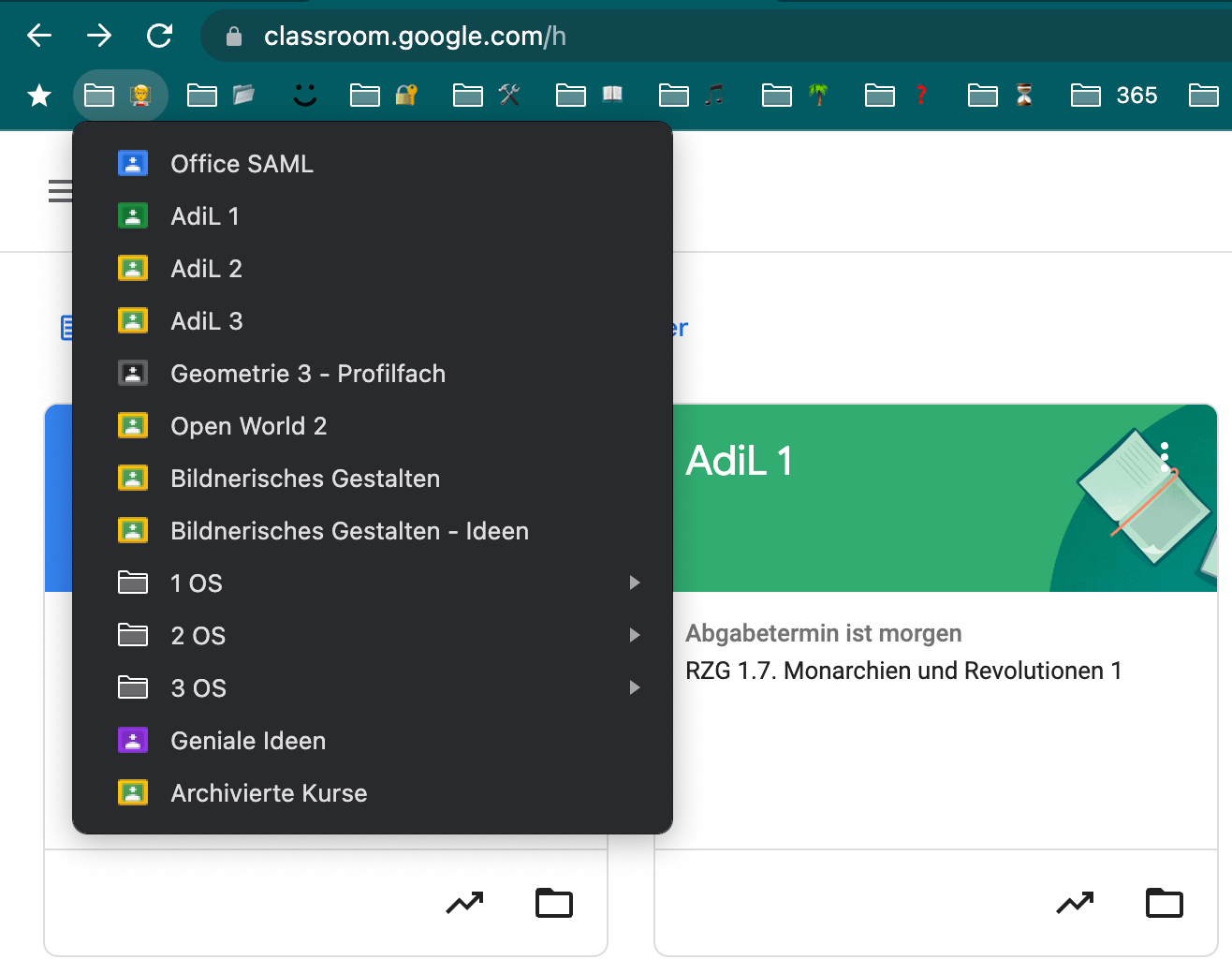
Classroom in mixed-age learning
Google Classroom can also be used very well in a mixed-age environment.

Here the number of grades is reduced. I set up one class (Office), then another per year group (AdiL 1, AdiL 2 and AdiL 3). Things that affect the whole mixed-year class are posted in Office, things for the 1st secondary in AdiL 1, those for the second in AdiL 2, and so on. The categories change here and stand for the individual school subjects:
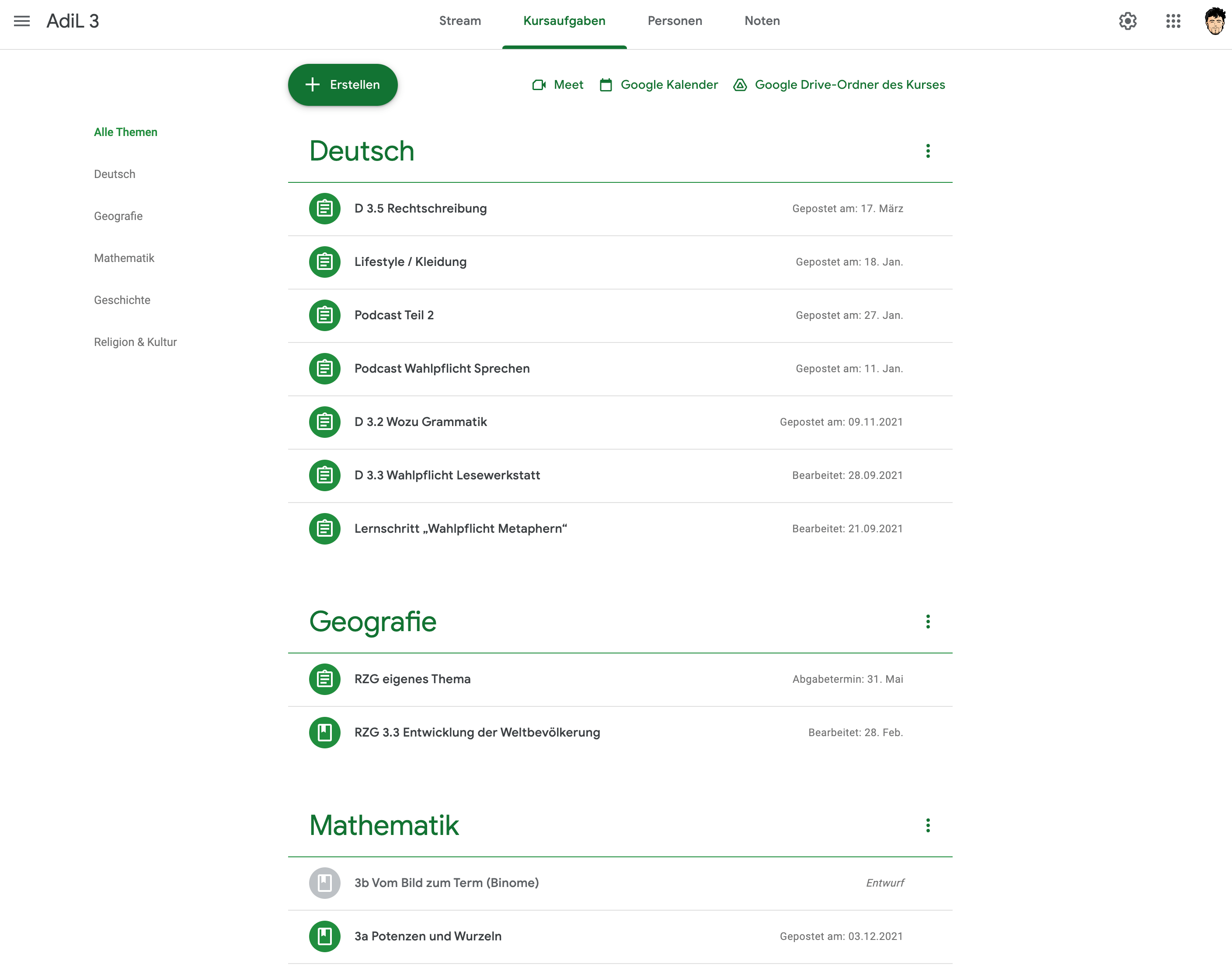
I have also started to post group tasks only to the group leaders instead of to everyone. They then invite their group members to the documents by sharing them. This way, I only have the five finished group documents in my teacher overview and no empty assignments from the other students in my overview.
Distance learning
The classroom is perfectly prepared for distance learning: With one click, my students enter the video conference Meet, which offers me a digital whiteboard with Jamboard. I can also prepare Escape Rooms in advance and assign group tasks to the rooms during the session. After a certain time, everyone returns to the class session. It has proven useful to practise these procedures a few times in the classroom (turn off microphones immediately because of feedback).
We also talked about how to behave on a video call and established netiquette for chats (video on, microphone off). I usually share my screen already and have a presentation slide there for those who are five minutes early, countdown included. QR codes with fun tasks: Iceberg drawing, class challenge, etc. I set fixed start times and expect everyone to be on time and show up. Depending on the task, they can say goodbye, but I remain as a contact person for questions.
When groups of students are present, each other's questions are asked in the chat or in a collaborative document so that the flow of speech is not disturbed. By the way, the Jamboard is also accessible as a blackboard for student explanations. All in all, there are many features that simplify workflows, leaving more time for teaching and learning.
You can find out more about Google Classroom in the article "A teacher's dream - promoting digital skills with Google Classroom".
You can find out how educational institutions can systematically achieve the teaching of tomorrow in our white paper "With Google for Education to the digital school".



